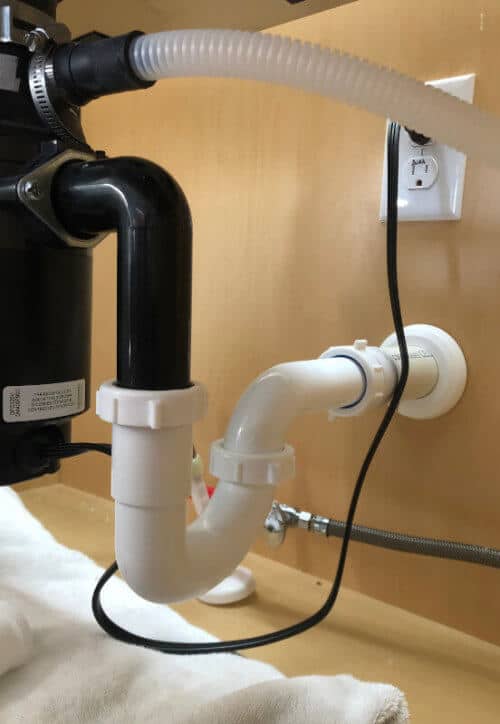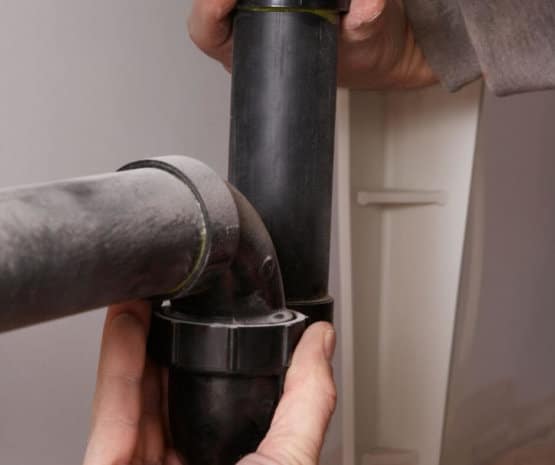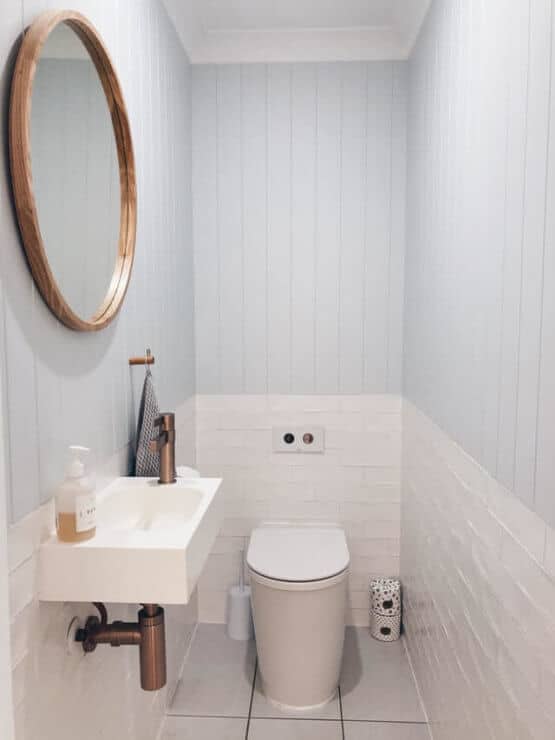It’s about time for your toilet upgrade if it is not performing as well as before. Sometimes, minor changes like replacing an old trap come as a game-changer. Yet, how do you know which one – s trap vs p trap is the one you need?
Understanding the difference between these two includes more than it meets the eye. You should have your toilet configuration in mind either way, while we are going to introduce other details on traps.
By the end of this article, you will know everything about these two plumbing traps, and which one would perform better in your bathroom.
What Does a Trap Do?
Even though it sounds tricky, a trap is actually an extremely useful part of any plumbing system found in sinks, tubs, and toilets.
A trap system includes curving and bending pipes that prevent smells and gases from the sewage system reaching your premises.
Some of the most common gases are:
- Carbon Monoxide,
- Methane,
- Nitrogen,
- Hydrogen-Sulphide.
You probably already know Carbon Monoxide is lethal if present in higher concentrations.
The main thing about plumbing traps is that they protect the health and safety of your family.
Without a trap, some of the above-listed harmful gases would find their way to your bathroom or kitchen.
Every time water goes down your sink, tub, or toilet, some of it gets trapped along the way, mostly in the bends.
Trapped water is what creates a blockage for upcoming gases reaching out to your kitchen or bathroom.
However, the trap seems to trap more than just gases.
If you drop down a heavy object down there inadvertently, you will find it right here.
We can’t guarantee whether the object would smell pleasantly from that moment on, but you won’t lose it at least. Plumbing traps are a blessing for the youngest ones.
S Trap – What Is It and How Does It Work?
Now that you know all the benefits of a plumbing trap, here comes the fun part – more about S trap.
Named by its shape, the S trap is mostly found in toilets on ground floors or the ones where the pipes are installed through the floor.
For this reason, S traps were the prevalent type for many years. In modern times, S traps are old-fashioned.
Once you flush the toilet, this water will run down at first, then rise to a certain point, and go down again.
As soon as it finishes its pathway, water from the toilet will create a trap around the first bend.
This applies to bathtubs and sinks as well. However, as we already said, S traps are somehow dated.
On the downside, you would have to give up more space in your bathroom if you want to install this type of trap.
Also, comparing an S trap to the P trap, the first one siphon dries easier.
When the siphon dries, the level of water drops and gaps for sewer gases open up.
Luckily, if this happens, you can pour a glass of water in the trap and seal it again.
P Trap – What It Is and How Does It Work?
S traps go up and down, creating an S-shape. P traps, likewise, create a P-shape.
The trap gets down, then incurves, turns straight, and finally, opens up to make the P-shape.
This type of trap is more commonly installed in newer kitchens and bathrooms, especially in top floors.
Nowadays, plumbers prefer using P traps, as these are less vulnerable.
If you install it properly, there is no way that you would be dealing with a dry siphon, ever.
P traps create a super-strong seal.
Yet, be extra careful when installing it yourself.
If you miss some of the steps, your P trap will lose seal and let harmful gases into your living space.
S Trap vs P Trap – Which One to Install?
If we would tell you S traps are banned for a couple of years now, would you consider installing one?
Exactly.
The main reason these traps are not allowed in newer construction anymore is that sewer gases were entering people’s homes.
Not all of S traps were reported an issue.
However, a few rare occasions combined with other, external conditions made the S trap be discarded forever.
Let’s get real – nobody wants a ticking bomb in their drain.
Besides their terrible smell, the listed gases can be explosive or poisonous, which is why this matter should be taken seriously.
Thus, if you are renovating your bathroom, install a new P trap.
What If an S Trap Fails?
In this section, we will explain what you can do if your S trap fails.
If you are tight on the budget, this easy fix will prevent gases and smells from entering your home, but consider replacing the old with a new P trap as soon as possible.
The main thing to do here is to flow a large amount of water through the drain.
A section of water flowing past the trap will refill it and create a new seal.
Repeat once more, just in case.
Interestingly, newer, P traps, come with complicated plumbing codes – a nightmare for do-it-yourselfers.
S traps were much more suitable for common-sense fixes.
What Should I Do If I Have an S Trap?
If your S trap is functioning perfectly fine, there are no smells around the sink, tub, or toilet, you should do – nothing!
This is not exactly a major concern, as most people never notice these smells.
However, if you want to ensure nothing bad happens, a vent stack is everything you need.
Even though you would have to tear out the wall to install it, the costs of this project are minimal.
Make the vent go through the roof and you will be safe and sound for many years to come.
Instead, you can install an AAV (Auto Air Vent) or modify the existing trap to a P trap.
Just make sure the arm of your existing trap measures twice the diameter of the drain line.
How to Install the P Trap
If you would still like to replace the old with a new trap, we will explain the needed steps in this section.
It’s good to mention that this task won’t cost you a lot of money and it is relatively easy to perform as well.
DIYers, beware of the importance of the PVC pipe.
You want to join everything tightly and prevent leaks.
Even though some P trap installations involve certain restrictions, two rules will make sure you are doing the right thing with the code.
Rule number one is that you can install 3 utility appliances maximum to a single P trap.
Three sinks are allowed, but you wouldn’t be allowed to attach a tub or a toilet to the same trap. Just be careful about the numbers.
If the line you are planning to install a new trap to is frequently used, apply some trap primer before the installation.
The main point of the primer is to seal everything tight and prevent sewer gas leakages.
Do you live in a very dry climate?
Then it would be great to check the level of water within the trap.
There’s a chance all the water from there will evaporate.
If this happens, flush a large amount of money through the line and refill the trap.
S Trap vs P Trap Summary
We are hoping you have no doubts about these two types of traps anymore.
If your S trap seems to be functioning well still, there’s no need to make any changes.
However, strange smells in your kitchen or bathroom may indicate the trap has failed.
When answering the question s trap vs p trap, the latter seems like a safer option.
You can replace your old trap easily at a low cost, but it’s better to wait until the old one breaks down.
S Trap vs P Trap FAQ
When Were S Traps Banned?
While there isn’t an exact date when were S traps banned, this happened earlier than you think.
In fact, the prohibition of S traps started in the first half of the 20th century.
Before that, S traps were as common as P traps.
However, as time went on, people noticed the flaws on S traps.
This lead to many complaints until, finally, S traps became illegal.
Are S Traps Illegal in Australia?
While all S traps are prone to the same type of problems, there isn’t a strict law prohibiting you from installing them in Australia. In fact, this is the most common type of waste traps there.
Are S Traps Illegal in UK?
The use of S traps is frowned upon in the UK.
This means they are prohibited in most areas of the country.
Is P Trap the Same as Bottle Trap?
P trap isn’t the same as bottle trap.
One of the main differences in bottle trap vs. P trap is that bottle traps take less space than P traps.
This is because they look like a bottle, and the added waste space goes underneath the main pipe.
Both are perfectly legal, and which one you’ll use is entirely up to your preferences.
What Is a P Trap Vent?
Most waste traps require a waste-vent system.
These systems give the sewer gasses the area to vent, so the pressure doesn’t build up inside the sewer lines.
Also, they prevent the water to run out of the trap. A lot of times, if your plumbing system was built to have a P trap, you’re good to go.
However, if you made some modification, such as installing a P trap on your own, you’ll need a P trap vent. Without a vent, a P trap can become a health hazard.
Read Also: House Smells Like Gas But Have Electric

Michael Davis is a heating & plumbing expert who currently works as independent contractor in SC. He also writes for Plumbertip.
For almost 10 years he worked on various plumbing tasks across South Carolina.







